Monitor now for mite activity on conifers
The first generation of mites begins hatching in the spring. Early scouting of conifers helps you monitor populations for an increase that may require control.
We are beginning to find mites active on several conifer species. Although the insects may be actively feeding by now, we often don’t see the damage until later in the growing season. If you suspect mite problems, perform a foliage check. Take a piece of white paper (Eriophyid mites show up best on a black background), hold it under a branch suspected of having mites, and strike the branch hard against the paper. This should dislodge the mites, and even though they are very small, you should be able to see the dark, oval spider mites against the white background or the cream-colored Eriophyid mites on the dark sheet. Spruce spider mites are small, about the size of a period at the end of a sentence.
Spruce spider mites
Spruce spider mites are often a problem on fir and spruce trees, but populations can build up on nearly all Christmas tree species. Spruce spider mites are considered a cool season mite and thrive when daytime temperatures are in the 60s and 70s. Newly hatched larvae are pinkish, but turn dark green or dark red after initial feeding. Growers should keep an eye out for the dark mites or their webbing, especially if you had damage from mites last year.
Spider mites have tiny mouthparts modified for piercing individual plant cells and removing the contents. This results in tiny yellow or bronze speckling on the needles. When many of these feeding spots occur near each other, the foliage takes on a yellow or bronzed cast. Once the foliage of a plant becomes bronzed, it often drops prematurely. Scout the oldest foliage, near the stem of the tree – that’s where the mite populations build up first.
Read more information on spruce spider mites from Pennsylvania State University.
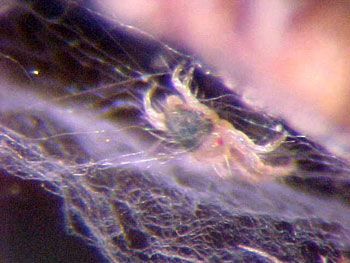
Spruce spider mite
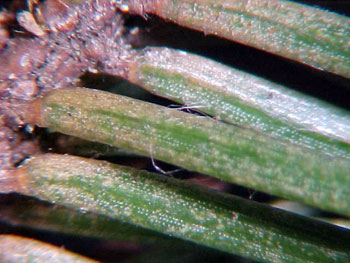
Close up of spruce spider mite injury
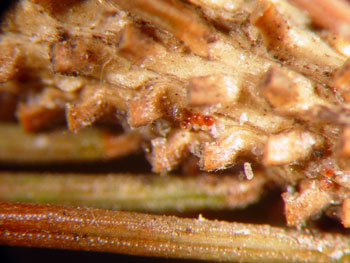
Spruce spider mite eggs
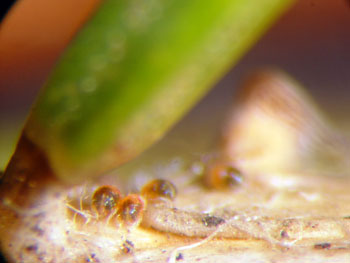
Spruce spider mite larvae
Eriophyid mites
Eriophyid mites are very tiny, carrot-shaped and cream-colored. In order to see them, you need at least a 15x hand lens. Even then, the insects are barely noticeable. Eriophyid mites discolor and distort foliage by feeding on the buds and needles. With these mites we usually find the pale yellow to bronze needles on current season’s growth. Damage symptoms can be confused with other symptoms from drought, winter or herbicide injury, etc.
Read more information on rust mites on Christmas trees from North Carolina State University.
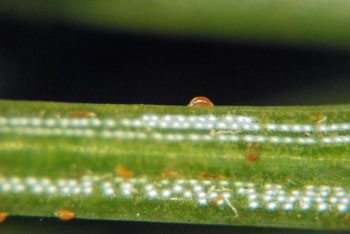
Carrot-shaped Eriophyid mite on spruce needle.
Admes mites
In past years, we have most often found Admes mites on white spruce or Black Hills spruce, but we will find them on Colorado blue spruce and Norway spruce as well. They’re larger than the spruce spider mite and have a dark, reddish-brown body with light tan legs. Their feeding can cause discoloration of the foliage. If populations are reaching damaging levels, the treatment for this pest is similar to that of spruce spider mite.
See MSU Extension’s “Admes mite” factsheet for more information.
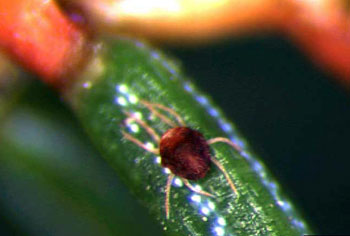
Admes mite adult resting on needle. Photo credit: Rayanne
Lehman, Pennsylvania Department of Agriculture, Bugwood.org
If you see bronzing of the foliage or find mites when sampling, you may want to send a sample into MSU Diagnostic Services to confirm which type of mite you have.



 Print
Print Email
Email

